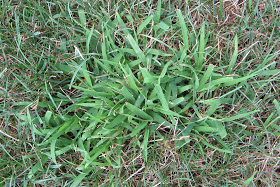I would have to say that crabgrass probably ranks number #1 as the most vilified weed/pest in Michigan lawns. Dandelions are a problem, but they tend to be easily controlled with simple weed control applications. Crabgrass on the other hand is a problem that isn’t necessarily easy to solve. Here are some pointers to help you solve a crabgrass problem.
- Crabgrass does not like thick beautiful well maintained lawns. If your lawn is properly watered, mowed & fertilized, you probably don’t have a crabgrass problem. MStill make sure an application of crabgrass preemergent is made in the Spring.
- Crabgrass thrives in lawns that are thin, lack proper fertilization and are not properly watered. If this describes your lawn, addressing these issues will help in the long run. Applications of crabgrass preemergent to lawns in poor condition will work in a limited capacity. It is still worth it to apply the crabgrass preemergent, just know that it is unlikely to prevent all crabgrass from germinating in the summer.
- If your lawn has a crabgrass problem and is thin, overseed in mid August to mid September. This allows for an application of crabgrass preemergent in Spring. Crabgrass preemergent should not be used on a newly seeded lawn. That is why you should establish new seed in the Fall so the new grass plants are mature enough prior to a Spring crabgrass preemergent application.
- Crabgrass preemergent can be applied to a Michigan lawn from mid March to Mid May. Current preemergent products are very good and last a long time.
- If you believe you have crabgrass in your lawn in the Spring or in the Fall, get it checked out by a professional. You are probably looking at clumps of Tall Fescue. Crabgrass germinates during the Summer and dies in Fall after the first frost.

